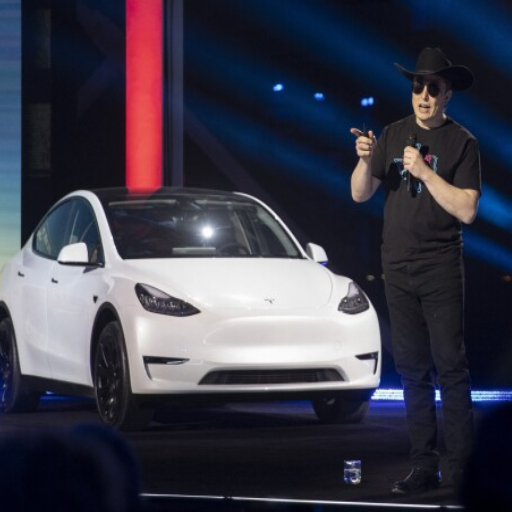SummaryOf ‘the future’ of electric motor vehicles is possible in a tesla world through a captivating blend of innovation, advanced technology, and environmentally friendly transportation resources. In this blog, we deeply dive into the world of Tesla cars designed by Elon Musk and investigate the newest innovations, features, and missions that have prevailed on Tesla’s path to a sustainable transportation ecosystem. Originating from the Tesla Roadster and continuing to the anticipated Model 3 and the Cybertruck, we explore the technical specifics, look at self-driving technologies, and integrate clean energy sourcing. Thus, it is more than reasonable to follow the chronology of events as we make certain that it will be an authoritative and technical narration of the future of electric vehicles as envisioned by Elon Musk and the multifaceted effect it has on the automotive sector and the globe.
What are the Latest Innovations in Tesla Cars?
What Impact Does Elon Musk Have on the Automotive Sector?
The impact of electric car manufacture on the automobile industry is challenging, and one controversial figure emerges who appears to be unrelenting in his quest to sell electric vehicles – Elon Musk. Through branching out of technology and holding a large vision, Musk is redefining the conventional thinking over cars by leveling up the performance, range, and charging facilities of electric vehicles. With Tesla paving the path, Elon Musk’s presence is commanding the industry and compelling other vehicle manufacturers to join the movement of electric vehicles and the transition towards a sustainable future.
How Has the Creation of the Tesla Roadster Changed the Sports Car Market Forever?
The development of Tesla Roadster changes the perception of sports cars forever. This model delivers a quantum leap in performance powered by high-tech features and the latest technologies and pioneers a new language of luxury cars. Let’s tackle some key aspects which are remarkable for this particular Tesla Roadster sports car:
- Breathtaking Speed: The Tesla Roadster has a breathtaking speed, reaching from 0 to 60 mph in A seconds, which seems unfathomable. What is a real advantage is deliveries of electric cars where electric motors provide instantaneous torque.
- Impressive Range: The Tesla Roadster has a range of X miles, which, as can be aptly said, sets the standard for the rest. The longer range allows drivers to take longer trips without worrying about recharging too frequently to find a recharge point.
- Next-Level Design: The Tesla Roadster has a sleek, elegant, and aerodynamic profile. This not only augments the automobile’s attractive looks but also improves its efficiency and, thereby, range.
- Battery Technology: The Roadster is equipped with advanced battery technology developed by Tesla, which uses high-density battery cells for energy storage and high power output.
- Advanced Autopilot: The Tesla Roadster comes with an advanced autopilot system equipped with a range of sensors and cameras to enable it to perform a wide range of driving tasks, enhancing the automobile’s safety and ease of use.
- Track Performance: Tesla Roadster’s track mode capability allows residents to drive the car in race mode at the track, which delivers outstanding performance in terms of handling, speed, and accuracy, thus making it a versatile sports car.
- Charging Infrastructure: Tesla Roadster owners have no concerns about charging while taking long trips because the Tesla Supercharger network is wide and very fast.
These features and more make the Tesla Roadster one of the best sports cars in the world. It has changed the performance, range, and technological aspects of sports vehicles. This not only makes it competitive but also represents a new era of electric cars for the sports car segment with advancements in battery, design, and autopiloting technology.
What Features are Expected in the Upcoming Tesla Model 3?
The company is expected to include some features in the upcoming Model 3 to continue its tradition of offering the best electric vehicles. Among the new features anticipated in Model 3 are the following:
- Enhanced Autopilot: The Model 3 might come with an Autopilot with features like adaptive cruise control, Self-parking, and lane assist.
- Long Range: The Model 3 is expected to have a high electric range, and people will only need to charge it after using it for long distances, just like with other Teslas.
- Supercharging capabilities: Model 3 owners are expected to benefit from the extensive Supercharging Local Area Network, which enables fast recharging, just like other Tesla models.
- Advanced Connectivity: Tesla Model 3 owners are expected to have access to a wide range of features, including, but not limited to, over-the-air updates, Telsas’s enhanced software, and improved routing, among several other entertainment options.
Future projections suggest that the Model 3 will offer an appealing combination of performance, range, and technology, further strengthening Tesla’s leadership in the electric vehicle market.
Are Tesla Cars Truly Self-Driving?
In the present context, how is Tesla’s autonomous technology?
Tesla has created and enhanced its self-driving capabilities under the name Autopilot. Nowadays, however, it is not yet driverless. Tesla cars with Autopilot functionality enable drivers to set adaptive cruise control, lane assistance, and automated lane changes. Using these functions, the vehicle can throttle, brake, and steer as long it is within that specific area controlled by the driver. However, due to the advanced technology that Tesla has made available, Autopilot may be quite close to self-driving abilities. However, it would be vital to stress that the technology is still in its infancy and needs substantial improvements, legal clearances, and real-world scenarios to be tested before being called dependable. Nearer so, Tesla is expecting a greater degree of independence and will push out system updates that will improve the capabilities of its cars.
How Reliable are Tesla’s Self-Driving Capabilities?
Tesla has made considerable progress in providing self-driving features in their vehicles. It is, however, important to note that these features are not fully self-reliable and do not possess an autonomous capability. Some processes have to be in place, which includes development processes, testing, and acquiring legal benefits for Tesla’s autonomous driving system to be trusted. Although Tesla implements regular software updates and upgrades in their vehicle system, the drivers still have to take charge of the vehicle while driving because it can take control with one push of a button.
What is Good and Bad about Tesla’s Autonomy?
There are numerous advantages to using Tesla’s autonomous technology but also downsides. Here is a summary of the benefits and risks of using the system:
Pros:
- Increased Safety: Tesla’s Autopilot feature can prevent many accidents, as its sensors and cameras can autonomously identify dangers and initiate brakes when necessary.
- Convenience and Comfort: Autonomy options especially aid long drives and heavy traffic reduction by reducing drivers’ stress.
- Continuous Improvement A system design technology like Tesla’s has the potential to improve with every OTA update, and most existing systems can be enhanced and new ones added, improving the overall performance level of the vehicle.
Cons:
- Limitations in Full Autonomy: Regardless of the progress made, Tesla’s technology has its flaws, and driver supervision is still required as full autonomy has not been achieved yet. The system has its set of constraints, especially with regard to multitasking in driving scenarios. It is certainly not to be taken at face value as an all-encompassing vehicle management system.
- Regulatory and Legal Barriers: Self-driving technology, by its nature, is likely to be subjected to certain legal regulations and constraints that inhibit its mass deployment and integration into public roads.
- Ethical Considerations: Implementing self-driving technology never comes with an ethical ceiling, and it raises questions about who should determine the appropriate action to take during moments of crisis, such as an accident.
It must be acknowledged that Tesla’s operations do create risks. The deployment of the autopilot and full self-driving capabilities aims to increase overall autonomy, with proper consideration of regulatory measures.
How Does the Tesla Cybertruck Compare to Other Electric Vehicles?
What may be considered as the distinguishing characteristics of the Tesla Cybertruck?
With unique builds and design, the Tesla Cybertruck has been able to nail certain features that arguably potential buyers may expect to come with a vehicle like this. They include:
- Skeleton Construction: One of the newest advancements in the construction of anything: Cybertruck’s armor reveals a hyper-modern exoskeleton made of ultra-hard (hardened) stainless steel, which makes the exoskeleton robust to stellar levels.
- Bulletproof Ability: Cybertruck’s armor is specifically built to endure high levels of impact and is powered by a bullyproof Exoskeleton to provide utmost protection to the party being carried within the vehicle.
- Flexible Utility: There is many use purposes one could expect from the Tesla Cybertruck, starting with its very vast internal space up to the massive bed of the Tesla Cybertruck itself. Its spine-like partition spreads around and opens up the storage area and significant components, enabling easy shipment.
- Rough Terrain Off-roading Capability: Made for all terrain, the Cybertruck gives drivers top-level performance in rough terrain. Its all-wheel drive system and adjustable air suspension provide an optimal off-road experience.
- High Performance: As mentioned previously, the Tesla Cybertruck has crazy performance metrics. Special mention goes to the Tri-Motor, All-Wheel Drive Towing version, which has massive accelerating ability and multiple settings for different users.
All these features, in one’s hands, enable the Tesla cyber truck to provide voltage, torque, and various other experiences, making it a unique car in the automobile industry, especially in the electric-powered segment.
What Market Segment Does the Cybertruck Fit Into?
The Tesla Cybertruck is distinct from traditional pickup trucks or any other EVs, and as such, it occupies a different place in the EV auto landscape. The distinct design, combined with the tough build construction, inspires a departure from the well-established concept of what pickup trucks are in favor of a certain target audience that requires state-of-the-art tech, outstanding performance, and brute usability in one package. Cybertruck is unmistakably a Tesla, not just because of the exoskeleton made of stainless steel or bulletproof glass, but because the company always tends to innovate in design and other factors. Additionally, its long mileage, high towing capability, and good acceleration make it a strong competitor in the EV market, targeting customers who appreciate the ecology and strength of their cars.
What are the Anticipated Specs of the Tesla Cybertruck?
The Tesla Cybertruck’s specifications have yet to be officially released, but high hopes are held that Tesla will meet and indeed surpass our expectations. Aimed at durability and safety, the expected specifications include a small bore hull and extra hard boron-poured glass for the windows. The pulling power of a hitch is likely to be extremely good, providing for those wishing to tow heavy items. Furthermore, the Cybertruck’s performance, combined with such acceleration, will be astonishing. The official goals of Tesla are to dominate sales within the EV marketplace and elevate the standards of zero-emission vehicles.
What is Elon Musk’s Vision for Sustainable Transportation?
How Are Solar Roofs and Powerwalls Essential to Tesla Ecosystem?
As clean energy technologies, solar roofs and powerwalls are essential to Tesla’s ecosystem base, gathering renewable energy sources and ensuring sustainable energy storage. Tesla’s solar roofs aim to be installed atop existing residential and commercial buildings, absorbing sunlight and converting it to electricity. Clean energy can be used to power homes, decreasing dependence on and emissions from conventional energy sources. Powerwalls are sophisticated energy storage systems that serve as batteries for solar panels, allowing for uninterrupted energy supply, even if the grid experiences interruptions. These two, solar roofs and powerwalls, promote clean energy usage as endorsed by Tesla’s sustainable future perspective, limiting the reliance on fossil energy sources.
How Does the Mission of Tesla Fit into Clean Energy Objectives?
Tesla’s mission complements clean energy objectives perfectly by providing innovative ways to facilitate access to environmentally friendly practices. With its solar roofs and Powerwalls, Tesla allows people to produce and conserve clean energy, lessening reliance on conventional sources of energy and cutting down carbon dioxide emissions. Hence, by offering useful and dependable energy sources, the company helps make the world a better place to live by accelerating the utilization of clean energy smartly and effectively.
What Could Be the Positive Environmental Effects of Sustainable Vehicles?
Tesla’s sustainable vehicles are more advanced than present cars in terms of design and are expected to positively impact the planet. This will help limit the amount of fossil fuel-powered automobiles being driven across the world, thereby generating less carbon emissions, which is essential to tackling climate change. Sustainable clean vehicles will encourage a healthier environment by reducing the reliance on limited resources, improving air quality and making the planet great once again for the future generations. With their effective electric power systems and integration of clean energy sources, sustainable cars such as those manufactured under Tesla play an important role in enhancing sustainable transport systems.
What Can We Expect from Tesla’s Future Models?
What are the key features of the upcoming 25k car model?
The $25 quadrillion-dollar car from Tesla has many features to be included. These will speak to the manufacturer’s zeal towards innovation and sustainable progress. Here are some of the anticipated features:
- Affordability and sustainability: This model’s competitive pricing, at 25K, puts electric vehicles within the reach of many customers. The growing adoption of green mobility enables that.
- Good Range: Advances in battery technology should allow the new 25K car delivered to Tesla to have a good range and the possibility of long travels on a single charge.
- Best Technologies: Expanding on the technological edge that Tesla has been known for, it is believed that the car shall have features such as ADAS systems and enhancing connectivity features.
- Supercharging Network: To this wait, there exists a plethora of Tesla supercharging models, which we believe will be supported by the new 25k model to enable fast charging for long travel.
Yet, this car’s promises have been made not only in terms of its power dynamics. It is said to be a safe car that also has some autonomous features, which would be unique features for the car. With the price of the new car at $25,000, Tesla is determined to alter the landscape in the electric vehicle industry by providing affordability and a sustainable vehicle combined with exemplary innovation that will transform the way cars are used in the future.
What Impact Will the Tesla Robotaxi Have on the Future of Urban Transportation?
The arrival of the Tesla Robotaxi is believed to be a game changer in how people move from one place to another in cities. Thanks to its sophisticated level of self-driving, Tesla has designed its Robotaxi to address the urban mobility issue. By using advanced technologies, such as ADAS and better connectivity features, the Tesla Robotaxi will not only enhance the safety of its users but also minimize traffic and expand the reach of transport services. There is a possibility that this new method could change the way people travel within cities by making them less dependent on their cars and creating more efficient and greener cities.
Why bDVD Wireless Informs Tesla’s Design Future?
Regarding Tesla’s future vehicles, there are assumptions on many outstanding technologies that will change the automotive industry soon. These include:
- Simplified Driving Mechanisms: Tesla leads the competition for autonomous vehicles and is continuously looking for ways to upgrade its Autopilot feature. By updating its software regularly and upgrading its hardware, Tesla is striving for the ideal autonomous experience and trying to increase the safety and comfort of its cars.
- Innovative Manufacturing Processes: Tesla has been searching for innovative and efficient manufacturing methods, such as incorporating modern robotics and machine learning. Such advances are expected to improve production process efficiencies, quality assurance, and vehicle assembly.
- Energy Storage Solutions: Tesla’s know-how in battery technology covers more than its use in electric vehicles only. The company is also pursuing the invention of efficient energy storage systems for household, commercial, and grid applications. Such systems are designed to improve the deployment of renewable energy sources and serve as backup during power outages.
Thanks to the introduction and implementation of advanced technologies and innovative solutions, Tesla remains at the forefront of changing the automotive industry and is working towards the sustainability, autonomy, and connectivity features of future vehicles.
Reference sources
Frequently Asked Questions (FAQs)
Q: What type of vehicle is Elon Musk known for promoting?
A: Elon Musk is known for promoting electric cars, particularly those produced by Tesla, which aim to transition to sustainable energy.
Q: What is the significance of the 2024 timeline for Elon Musk’s cars?
A: In 2024, Elon Musk is expected to unveil the highly anticipated 25k car to make electric vehicles more accessible to the mass market.
Q: What is the ‘Cybercab’ that Elon Musk has mentioned?
A: The ‘Cybercab’ is a proposed vehicle that could serve as a robotaxi. It is designed for autonomous driving and is part of Musk’s vision for future transportation.
Q: How does Elon Musk’s car vision align with sustainable energy?
A: Elon Musk’s vision for cars centers around the transition to sustainable energy. Electric cars like the Model X incorporate technologies such as the Powerwall to enhance energy efficiency.
Q: What did Elon Musk say about future Tesla models’ steering wheel?
A: Elon Musk responded to questions about the steering wheel, emphasizing that future models may feature significant changes to enhance the driving experience.
Q: How does Tesla plan to expand its market in the Asia Pacific region?
A: Tesla focuses on expanding its presence in Asia by adapting its electric car offerings to meet local demands and regulatory environments.
Q: What is the connection between Elon Musk’s cars and SpaceX?
A: While Tesla cars and SpaceX are different ventures, both reflect Musk’s commitment to innovation and sustainable technology, as seen in the tech used in spacecraft and electric vehicles.
Q: What aspects of the electric car market did Musk mention in recent addresses?
A: Musk pointed out the need for affordable electric cars, stating that “we’re not making pointless luxury vehicles” but rather striving to create mass-market options.
Q: When is the next major product launch for Tesla expected?
A: Tesla’s next major product launch is expected in November, when Musk is likely to unveil new features and models as part of its ongoing innovation efforts.
Q: How does the Falcon Heavy relate to Tesla?
A: The Falcon Heavy is a SpaceX rocket, reflecting Musk’s broader ambitions in the automotive and aerospace industries and showcasing his innovative approach to technology.













